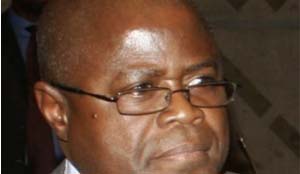By BRIAN HATYOKA –
ZAMBIA and Zimbabwe will start constructing the 1, 600-Megawatts (MW) Batoka power stations in January 2016, Mines, Energy and Water Development Minister Christopher Yaluma has said.
Two Batoka Gorge hydroelectric power stations with the capacity of 800 MW each will be constructed around 54 kilometres downstream from Victoria Falls extending across the international boundary of the two countries.
Mr Yaluma said the Batoka Hydro Electric Scheme was expected to start in January next year and it would run up to 2021 or 2022.
He said the feasibility studies for the Batoka power stations were going-on well currently and would be concluded by July this year after which the two countries would have financial advisors to make the way forward on the project.
Mr Yaluma was speaking in an interview in Victoria Fall town in Zimbabwe at the just-ended Zambia River Authority (ZRA) 32nd Council of Ministers meeting.
During the meeting, the Ministers approved the ZRA 2015 budget which includes provision for
counterpart funding for the development of Batoka Hydro Electric
Scheme and the rehabilitation of Kariba Dam.
“We are very conversant of the time factor and hence this project will start in January 2016 and it will run up to about 2021 and 2022,” Mr Yaluma said.
On the rehabilitation of Kariba Dam, Mr Yaluma said about US$ 294.2 million was required for the project.
“We have secured the funding on papers to rehabilitate Kariba Dam. Grants are almost tripling and we are also supposed to get more loans.
“We should start rehabilitating the Dam in the next four to five months particularly around September. We are very much on track as this is a very key project and we will ensure to deliver on that project,” he said.
He also assured water rafters that water rafting activities would not come to an end once the Batoka power schemes were realised.
And Zimbabwe Minister of Energy and Power Development Samuel Undenge said there was need for the two countries to boost their power generation capacity.
Currently,
ZRA is using a US$6 million grant from the World Bank for reviewing feasibility studies and Environmental Impact Assessment







